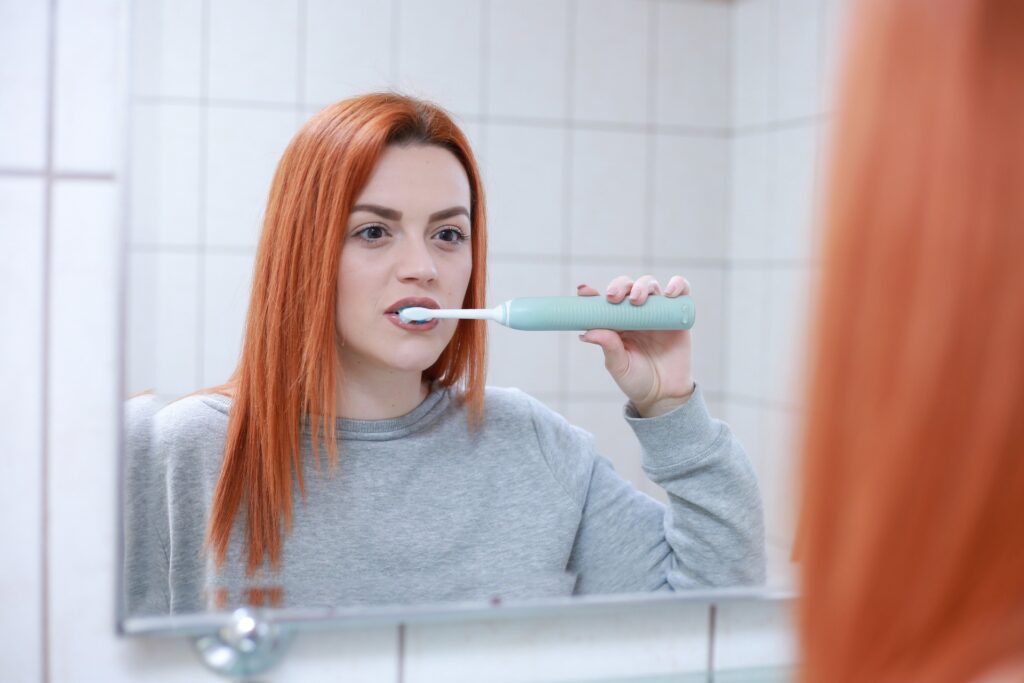
Brushing teeth after wisdom teeth removal can seem like a daunting task.
The area is tender, your mouth may still be numb, and the last thing you want to do is cause any more discomfort.
However, maintaining oral hygiene post-surgery is crucial for preventing infections and ensuring a smooth recovery.
Navigating through the do’s and don’ts of brushing after wisdom teeth extractions doesn’t have to be a puzzle.
Follow this step-by-step guide to keep your mouth clean and aid in your healing process.

The Day of Surgery – Taking It Easy
On the day you have your wisdom teeth removed, the priority is your comfort and beginning the healing process.
During these initial hours, it’s vital to avoid any activities that could potentially disrupt the recovery.
This includes brushing your teeth. The surgical area will be sensitive, and even the softest toothbrush bristles can cause unnecessary irritation or harm.
Engaging in any form of vigorous mouth rinsing or using force to spit out the water can risk the integrity of this clot. To minimize any complications, simply let the water dribble out of your mouth rather than spitting.
The emphasis on this day is to minimize any risk of infection and support the body’s natural healing mechanisms by keeping the area as undisturbed as possible.
Rest assured, skipping your regular brushing routine for this short period won’t compromise your dental hygiene and is a small concession for ensuring a smooth recovery from your wisdom teeth extraction.

The Second Day – Introducing Gentle Brushing
As you embark on the second day post-wisdom teeth removal, it’s time to gently reintroduce brushing to your oral hygiene routine.
With the sensitivity of the surgical sites in mind, select a toothbrush with soft bristles to ensure the utmost care is taken. Begin by carefully cleaning your front teeth, using minimal pressure to avoid any discomfort.
When moving towards the back of your mouth, maintain a delicate sweeping motion, steering clear of the extraction areas to prevent irritation.
This gentle approach not only aids in keeping the forefront of your oral cavity clean but also significantly reduces the risk of disturbing the healing process at the surgical sites.
Remember, the aim during this phase is to sustain cleanliness in a manner that supports recovery, without exerting undue stress on the sensitive regions of your mouth.
As you navigate through this step, it’s crucial to listen to your body and adjust your brushing technique as needed, always erring on the side of caution to foster optimal healing.

The Third Day – Expanding Your Cleaning Routine
As you step into the third day following your wisdom teeth removal, it may feel more manageable to extend the boundaries of your cleaning routine cautiously.
At this juncture, you’re encouraged to gently brush a bit closer to the areas of extraction, albeit with continued caution to avoid direct contact with the healing sites.
This gradual approach enables you to maintain oral hygiene without compromising the delicate recovery process.
Incorporating gentle warm salt water rinses becomes beneficial during this phase. Prepare this soothing rinse by dissolving a teaspoon of salt in a cup of warm water.
Use this solution to carefully swish around your mouth, aiding in the reduction of swelling and the promotion of healing. It’s important to let the saltwater gently escape your mouth without creating any suction, as this action could endanger the recovery progress.
During this time, remember to avoid mouthwashes containing alcohol, as these can irritate the sensitive areas and potentially hinder the healing process. The goal for day three is to slowly reintroduce more comprehensive oral care while ensuring that actions are taken gently and thoughtfully, to nurture the ongoing healing.
This mindful expansion of your dental hygiene routine is a crucial step towards full recovery, focusing on maintaining cleanliness and minimizing any risk of infection without disturbing the recovering tissues in your mouth.

Days 4 to 7 – Gradually Returning to Normal
During this period, your focus should shift towards gradually resuming your standard dental care regimen, with an emphasis on cautious, gentle brushing around the healing extraction sites.
By day 4, you might notice a decrease in discomfort, allowing you to open your mouth wider and reach further into the back with your toothbrush. It’s essential, however, to continue avoiding any aggressive brushing techniques that could disturb the delicate healing areas.
As you progress through these days, continue to incorporate the warm salt water rinses into your routine. This practice not only aids in keeping your mouth clean but also provides a soothing effect on the healing tissues.
Remember, the motion used to let the saltwater rinse out of your mouth should be passive to avoid creating suction that could disrupt the healing process.
This stage is crucial for monitoring your recovery and adjusting your oral hygiene practices accordingly. If at any point you encounter increased sensitivity or discomfort, it’s a sign to ease back on brushing the affected area and consult with your dental professional for personalized advice.
This is also an opportune time to evaluate the healing progress and ensure that no signs of infection are present.
By adhering to these guidelines, you’re taking important steps toward fully restoring your oral hygiene routine, while still providing the necessary care and attention to the extraction sites.
Through patience and gentle care, you’re fostering an environment conducive to healing, setting the stage for a return to normalcy in your dental care practices.

Beyond Day 7 – Approaching Normalcy
As you transition beyond the initial week post-wisdom teeth removal, your oral hygiene practices can start reflecting more of your pre-surgery routine, albeit with continued mindfulness towards the extraction sites.
It’s paramount at this juncture to persist in using a soft-bristled toothbrush. This will ensure that you’re cleaning effectively while minimizing any risk of irritation to the areas still in the healing phase.
Even as discomfort diminishes, the approach to brushing should remain gentle and considerate, especially when navigating around the sites of extraction.
At this stage, it might be tempting to resume a fully normal brushing routine vigorously, but caution is still advised. Pay close attention to your body’s signals; any pain or unusual sensitivity during brushing is an indication to proceed more gently or to momentarily avoid the tender areas and consult with your dental professional for guidance.
Reintroducing other aspects of your dental care routine, such as flossing, should also be undertaken with care. Start flossing again only if it feels comfortable, and avoid the immediate vicinity of the healing gums to prevent any accidental disruption to the recovery process.
This phase is also an opportune time to assess the overall progress of your healing and to ensure that your oral hygiene practices support continued recovery without setbacks.
Regular check-ins with your dental professional are recommended to address any lingering concerns and to verify that your approach to oral care is conducive to complete healing.
With each day, as you edge closer to full recovery, maintaining this balanced and gentle approach will serve you well in returning to your normal oral hygiene practices.

Additional Tips for a Smooth Recovery
For a smoother recovery following wisdom teeth extraction, being mindful of your diet is crucial. Choose foods that are soft and easy to consume without strenuous chewing, such as yogurts, smoothies, and mashed potatoes, to avoid disturbing the extraction sites.
Nutrition plays a key role in the healing process, so incorporating nutrient-rich soft foods can provide your body with the essential vitamins and minerals needed for recovery.
Staying hydrated is essential, but do so without the use of straws. The act of sucking can compromise the blood clot vital for healing, leading to complications such as dry socket. Instead, drink directly from a cup to safely keep up your fluid intake.
Adherence to your dental professional’s prescribed medication plan is another cornerstone of a smooth recovery.
Antibiotics may be prescribed to fend off infections, and pain relievers can help manage discomfort. It’s important to follow the dosage and schedule provided to ensure these medications effectively support your healing journey.
Engaging in these additional practices contributes significantly to a comfortable recovery phase, ensuring you navigate the post-extraction period with minimal discomfort and optimal healing.

The Biggest Take Away
During the first 7 to 10 days after your dental extractions, it’s important to follow the instructions given by your dental professionals.
After that, you can start brushing your teeth as normal, taking care to be gentle around the extraction site. Some patients forget to brush their back molars after extraction, so make sure you’re brushing all areas of your mouth properly. If you need more guidance on how to brush your teeth effectively, you can check out the following link: How to Brush Your Teeth Properly.
